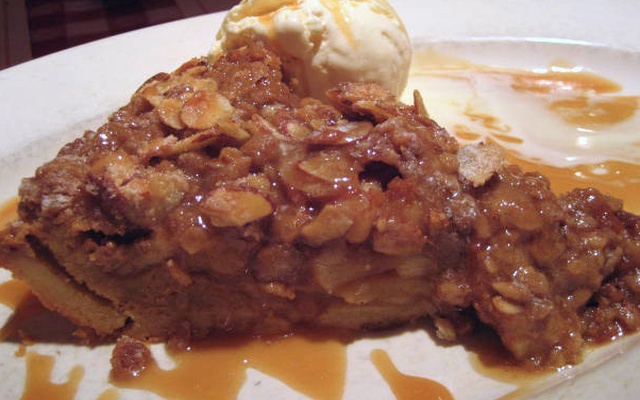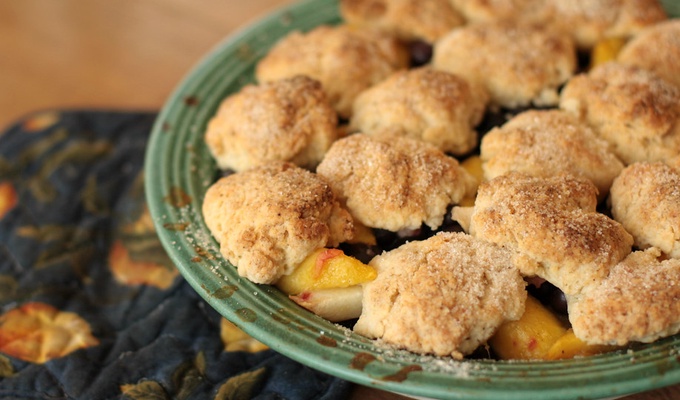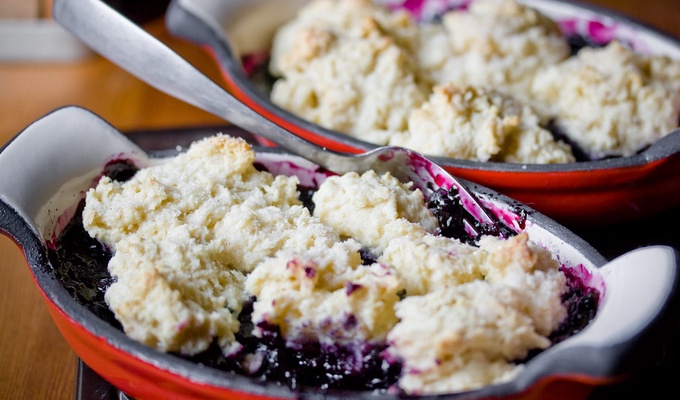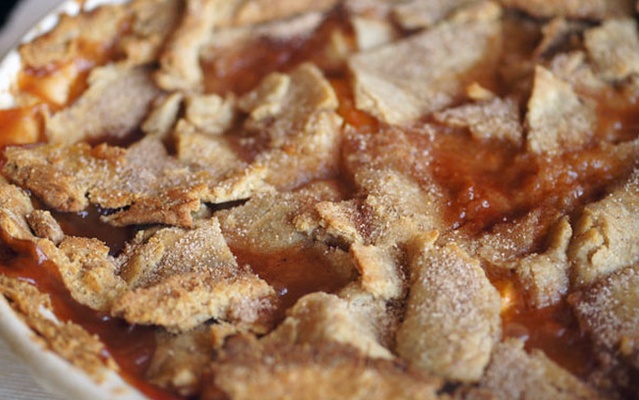A long tradition of American fruit desserts emerged during the pre-industrial period in the United States, as a widely distributed agricultural society found ways to use the bounty of seasonal fruit harvests. Many of these desserts developed into regional specialties that are still enjoyed today. Some examples include:
- Fruit buckle is made with a moist cake batter that has fruit mixed and poked into, and is then topped with streusel. It is somewhere between a crumble and a coffeecake.
- Grunts and slumps (the names are interchangable) are baked or stewed fruits topped with a sheet of rolled biscuit dough.
- Crisps (sometimes called crumble, an import from the UK) and are made by topping raw fruit with a mixture of flour or oats, butter, and often some nuts. As the fruit bakes into a compot, the juices soak into the topping, creating a caramelized crunchy layer.
- Cobblers are made by topping fruit with spoonfuls of biscuit dough and baking the whole together. Unlike a grunt, a well-made cobbler should have streaks of fruit visible between the biscuits.
- Brown betty (especially Apple betty) is formed like a crisp, but has layers of sweetener bread crumbs placed between the fruit.
- Apple pandowdy is formed like an apple pie, with a flaky pastry crust, but the crust is deliberately broken late in the baking process, allowing the juices to escape and create a sweet glaze over the pastry.
- Sonkers are a regional specialty of North Carolina, made by pouring a thick pancake-like batter over a syrupy fruit base.
- Pineapple upside-down cake, while not a product of the colonial or frontier period, is a characteristic early-20th century American fruit dessert, making use of the industrial-produced canned pineapple that became available from Hawai'i.





